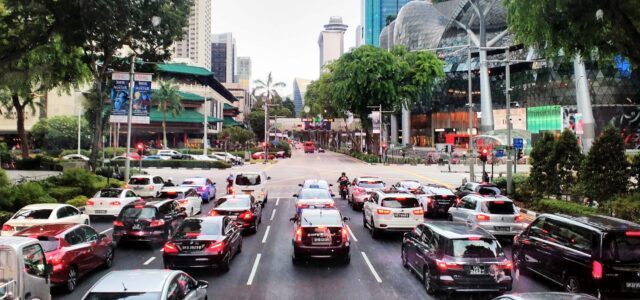Crackdown or cat-and-mouse? Why illegal Malaysian ride-hailing still thrives in Singapore despite years of enforcement
crackdown-or-cat-and-mouse-why-illegal-malaysian-ride-hailing-still-thrives-in-singapore-despite-years-of-enforcement
#Crackdown #catandmouse #illegal #Malaysian #ridehailing #thrives #Singapore #years #enforcement,
SINGAPORE: If you’ve recently walked through Marina Bay Sands, Gardens by the Bay, or even outside some local care homes, you might have noticed something familiar. Sleek Malaysian MPVs are picking up groups of tourists, mostly from China. Despite a crackdown by Singapore’s Immigration & Checkpoints Authority (ICA) and the Land Transport Authority (LTA), these unlicensed cross-border ride-hailing services seem to be operating as usual.
So why is enforcement tightening now, especially when these services have been in the shadows for years?
A quiet practice that got too loud
One Redditor, claiming to work in the industry, shared that these illegal services have long operated in a grey area, mostly transporting locals between Singapore and Johor Bahru. It was an unofficial but somewhat tolerated arrangement.
That changed when some operators got bolder. “They have exceeded their limitations,” the commenter stated. “It used to be rides to JB, maybe from the airport to JB, but now, they’re offering pickups from Changi to hotels, hourly chauffeur services, and even point-to-point rides within Singapore.” They moved into territory that directly competes with licensed local operators, cutting prices and ignoring regulations.
This change seems to have sparked the ongoing enforcement efforts. The line between convenient cross-border services and disrupting local transport has finally been crossed.
Parking lots and grey zones
The issue isn’t limited to tourist areas. One commenter mentioned seeing these vehicles parked at a care home in Tampines, far from typical tourist routes. “They’re probably using the space because it’s near Changi, and not many visitors drive,” they noted. “But I’ve seen them speeding through gantries behind other cars. It’s becoming a nuisance.”
This shows how normal and embedded the practice has become. For many Malaysian drivers, Singapore is not just a drop-off point; it’s a profitable market.
Some users suggest the crackdown might involve more than ride-hailing. One user proposed that these vehicles are also smuggling contraband—specifically vapes and k-pods—into Singapore. “When you match the timing, it lines up with new leadership and the crackdown on vapes. Stopping ride-hailing might cut part of that supply chain,” the commenter speculated.
Seasonal crackdown or long-term change?
However, there is a bigger question: Is this a defining moment, or just another periodic clampdown because of public attention?
For now, it’s difficult to tell. Enforcement usually increases when the issue gains more visibility, particularly with tourists involved. But eliminating it is a different challenge. Demand stays high, particularly among budget-aware tourists and cross-border customers. With Singapore’s escalating vehicle ownership outlays, locals usually cannot pay for similar services, leaving a market for unlawful practices and other options.
Until there are changes to the guidelines or solutions to cross-border transport become more inexpensive and consistent, these shadow services are expected to keep resurfacing, irrespective of embargos and clampdowns.
The road ahead
The ICA and LTA are committed to reducing the number of illegal Malaysian ride-hailing vehicles operating in Singapore. However, the ongoing cat-and-mouse situation is far from over. With steady demand and limited enforcement resources, more than just spot checks and fines may be needed to address a problem that has developed over the years.
For now, remain aware of the usual hotspots— and consider carefully before getting into that unmarked MPV.
